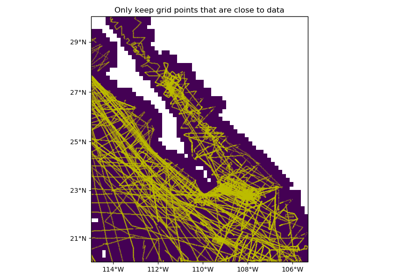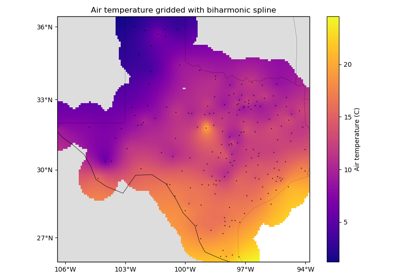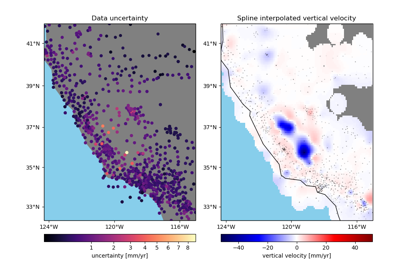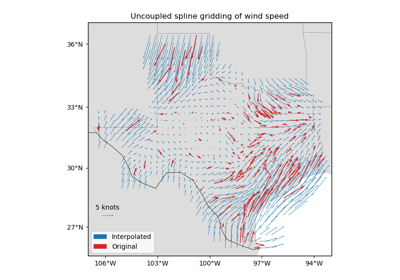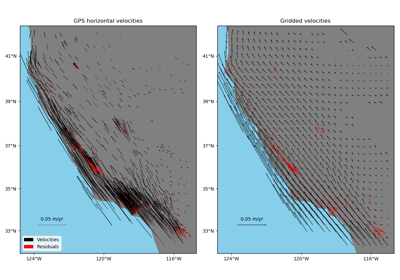verde.distance_mask¶
-
verde.distance_mask(data_coordinates, maxdist, coordinates=None, region=None, spacing=None, shape=None, **kwargs)[source]¶ Create a mask for points that are too far from the given data points.
Produces a mask array that is False when a point is more than maxdist from the closest data point and True otherwise.
The points that will be masked can be specified by their coordinates or by a region and shape/spacing, in which case a regular grid will be generated for the mask. If specifying a region, extra keyword arguments to this function will be passed along to
verde.grid_coordinates.Parameters: - data_coordinates : tuple of arrays
Same as coordinates but for the data points.
- maxdist : float
The maximum distance that a point can be from the closest data point.
- coordinates : None or tuple of arrays
Arrays with the coordinates of each point that will be masked. Should be in the following order: (easting, northing, vertical, …). Only easting and northing will be used, all subsequent coordinates will be ignored. If not given, the region and spacing or shape must be provided.
- region : list = [W, E, S, N] or None
The boundaries of a given region in Cartesian or geographic coordinates.
- shape : tuple = (n_north, n_east) or None
The number of points in the South-North and West-East directions, respectively.
- spacing : float, tuple = (s_north, s_east), or None
The grid spacing in the South-North and West-East directions, respectively. A single value means that the spacing is equal in both directions.
Returns: - mask : array
The mask boolean array with the same shape as easting and northing.
Examples
>>> from verde import grid_coordinates >>> region = (0, 5, -10, -5) >>> spacing = 1 >>> coords = grid_coordinates(region, spacing=spacing) >>> mask = distance_mask((2.5, -7.5), maxdist=2, coordinates=coords) >>> print(mask) [[False False False False False False] [False False True True False False] [False True True True True False] [False True True True True False] [False False True True False False] [False False False False False False]] >>> mask = distance_mask((3.5, -7.5), maxdist=2, region=region, ... spacing=spacing) >>> print(mask) [[False False False False False False] [False False False True True False] [False False True True True True] [False False True True True True] [False False False True True False] [False False False False False False]]
Note
If available, pykdtree can be installed for better performance.
